Our winemaker Kian Tavakoli was ready when I came in. We started talking about yeast. “The yeast that converts sugar into alcohol in grape juice is called Saccharomyces cerevisiae .” explained Kian, “Cerevisiae means beer so it's also used to make cerveza!” he added with a smile.
Now I am realizing that there are many different strains of saccharomyces cerevisiae and each of them has very specific properties. Therefore, choosing the right strain has important consequences for the wine.
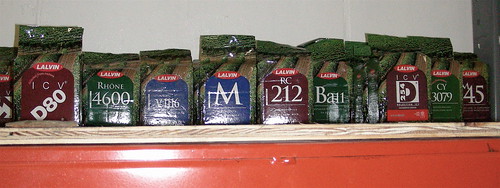
Crushpad has many different types of yeast
Originally, the plan was to use Enoferm BDX, a French strain commonly used in California for Bordeaux varieties but there was none left in stock that day so we used Enoferm CSM instead. It's also a yeast strain from Bordeaux and recommended for Cabernet Sauvignon, Cabernet Franc and Merlot. According to the manufacturer's instructions, its optimum fermentation range is between 15° to 32°C (59-89° F) and it does not handle alcohols above 14%. It favors color and phenolic extraction, is red fruit driven, reduces vegetal aromas and adds complexity along with balanced, round mouthfeel. In comparison, the Enoferm BDX had an alcohol tolerance of up to 16%, but making a 16% alcohol wine was not our goal.
To insure a quick start to our fermentation, we prepared a starter. First, we re-hydrated the yeast, mixing it with warm water. Then, we activated its life cycle by adding a small quantity of grape juice to it. In less than fifteen minutes, the yeast colony had expanded considerably and the starter was ready. We then poured the starter over the must to kick off the fermentation process.
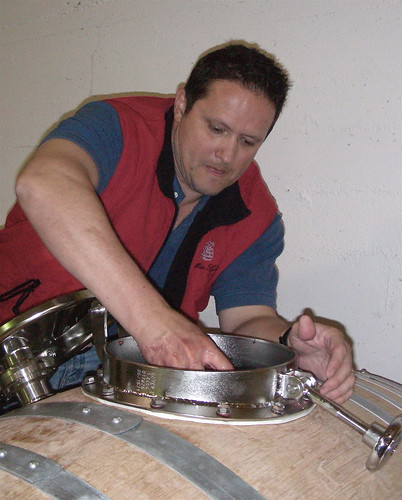
Crushpad winemaker Kian Tavakoli is getting some juice for the starter.
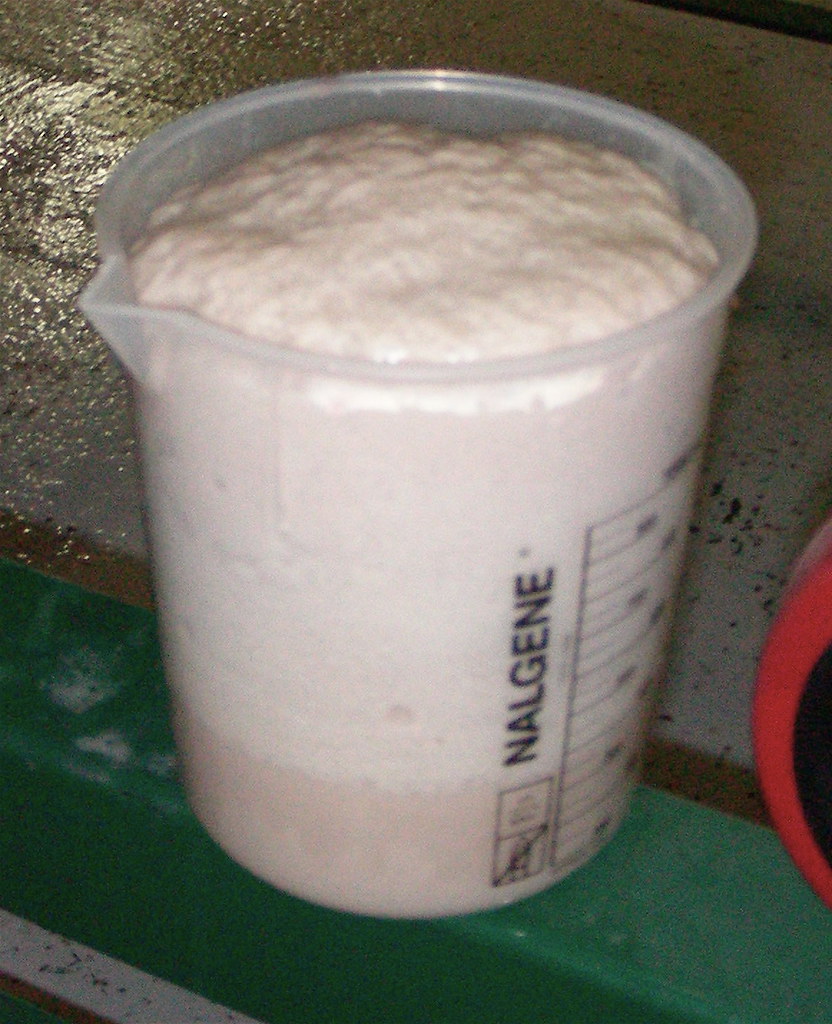
The starter is ready to be used
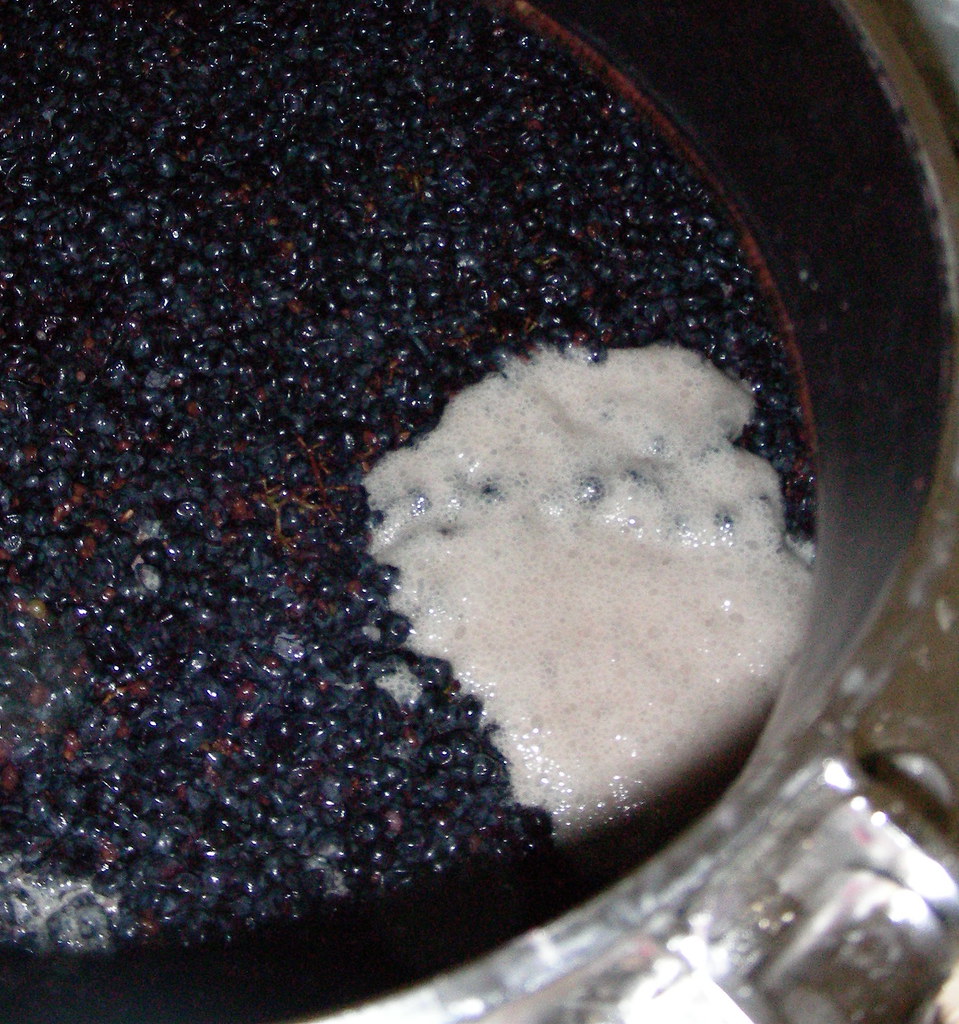
The starter is poured over the must
During fermentation, the yeast cells produce carbon dioxide gas that pushes a cap of skins, stems, and pulp to the top. Whereas physically pushing down the cap in order to keep it broken up and moist, as well as extract color and flavors is a common cap management practice, we chose to put our wine in a special brand new oak barrel placed on a barrel rotator stand. The cap and the juice is thus mixed by rotation of the barrel several times a day, which extracts color and tannin much faster than the punch down technique.
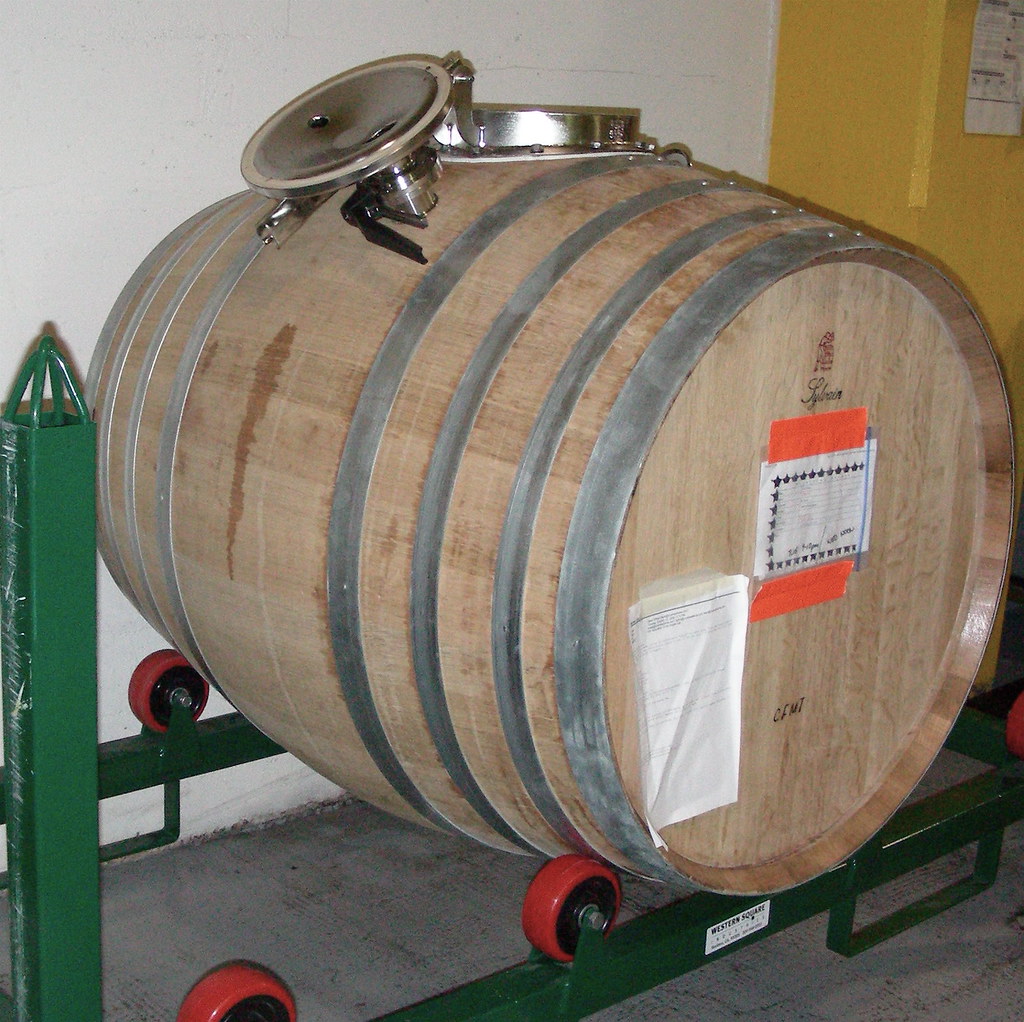
The wine will ferment in a brand new oak barrel placed on a barrel rotator stand.
Next week, I'll be at Crushpad again. I want to taste the baby wine, check how the fermentation is progressing and see the barrel being rotated!
Technorati tags: wine food & drink
1 comment:
This is certainly a good read - and a good reference as well. Most wine blogs on the Internet rarely have pictures. This is most helpful to aspiring winemakers.
Post a Comment